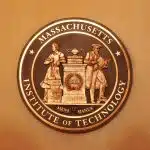During the 2023–2024 school year, MIT awarded bachelor’s degrees to 1,099 students. Graduate programs also had a strong showing, with 2,023 master’s degrees and 692 research doctorates completed in that time.
Among undergraduates, certain fields drew much larger cohorts than others. Based on the latest figures, we’ve ranked the 10 most popular majors at MIT and highlighted what makes each one distinctive. If you’re weighing your options at MIT, this guide shows where most students are choosing to specialize.
- What Are the Most Popular Majors at MIT?
- Computer and Information Sciences at MIT
- Engineering at MIT
- Mathematics and Statistics at MIT
- Interdisciplinary Studies at MIT
- Physical Sciences at MIT
- Biological and Life Sciences at MIT
- Business/Marketing at MIT
- Social Sciences at MIT
- Architecture at MIT
- Visual and Performing Arts at MIT
- Frequently Asked Questions
- Takeaways
What Are the Most Popular Majors at MIT?
During the 2023–2024 academic year, 1,099 MIT undergraduates earned bachelor’s degrees. Thousands more finished master’s or doctoral programs, but we’re zeroing in on the undergraduate picture.
Using MIT’s 2024–2025 Common Data Set as our source, we ranked the top 10 majors by the share of degrees they represented. The table below lists each major, the percentage of bachelor’s degrees it accounted for between July 1, 2023 and June 30, 2024, and the estimated number of graduates in that major.
| Major | Share of MIT Bachelor’s Degrees Conferred | Estimated Number of Graduates |
| Computer and Information Sciences | 29% | 319 |
| Engineering | 27% | 297 |
| Mathematics and Statistics | 14% | 154 |
| Interdisciplinary Studies | 9% | 99 |
| Physical Sciences | 7% | 77 |
| Biological and Life Sciences | 5% | 55 |
| Business/Marketing | 3% | 55 |
| Social Sciences | 2% | 22 |
| Architecture | 2% | 22 |
| Visual and Performing Arts | 1% | 11 |
Computer Science and Engineering together account for 56% of MIT bachelor’s degrees, or about 616 of 1,099 graduates. The rest is spread across mathematics, interdisciplinary programs, physical sciences, life sciences, business, social sciences, architecture, and the arts.
Computer and Information Sciences at MIT
Computer and Information Sciences is the largest undergraduate field at MIT, representing 29% of bachelor’s degrees. Most students are in Course 6, which includes Electrical Engineering and Computer Science subjects, where you can study everything from algorithms to AI to cybersecurity.
Rankings show the program’s reach:
- #1 in the U.S. for graduate computer science (U.S. News)
- #2 in the U.S. for undergraduate computer science (U.S. News)
- #1 in the world for computer science (QS)
Students often join research teams in CSAIL (Computer Science and Artificial Intelligence Laboratory) by their second year. The curriculum offers flexibility, with options like 6-14 (Computer Science, Economics, and Data Science) for those who want to bridge tech and social sciences.
Outside of classes, hackathons such as HackMIT help you apply skills to real-world challenges. By graduation, you will have built a portfolio of projects, a deep understanding of computational theory, and hands-on experience that employers value.
Engineering at MIT
Engineering is the second largest category, accounting for 27% of MIT’s bachelor’s degrees. It spans mechanical, chemical, aerospace, civil, nuclear, and other disciplines, all built around MIT’s “mind and hand” philosophy.
Distinctive features of engineering at MIT include:
- Access to top-tier labs such as MIT.nano and the Wright Brothers Wind Tunnel
- Project-based courses like 2.009 Product Engineering Processes, where mechanical engineering seniors design and prototype new products
- Opportunities to join competition teams, from solar car design to robotics
- Small advising groups that keep you connected to faculty mentors
MIT ranks #1 nationally for undergraduate engineering (U.S. News) and #1 globally for Engineering and Technology (QS). You graduate ready to solve complex problems and lead technical teams in industry, research, or startups.
Mathematics and Statistics at MIT
Mathematics and Statistics make up 14% of undergraduate degrees. Known as Course 18, the program allows you to focus on pure mathematics, applied mathematics, or joint tracks such as Mathematics with Computer Science.
Here’s what stands out:
- MIT is ranked #1 in the world for Mathematics (QS)
- Faculty include Fields Medalists and other internationally recognized mathematicians. One standout faculty member is Professor Peter Shor, famed for founding Shor’s algorithm in quantum computing, and recipient of numerous awards including the Nevanlinna Prize and the 2023 Breakthrough Prize in Fundamental Physics
- Students can engage in UROPs tackling everything from number theory to applied machine learning
- Flexible pathways let you tailor your studies toward theoretical research or industry applications
Collaboration is central in this program, and graduates leave with highly developed problem-solving skills that open doors in finance, tech, academia, and beyond.
Interdisciplinary Studies at MIT
9% of MIT graduates earn a degree that combines multiple disciplines. Examples include:
- 6-7: Computer Science and Molecular Biology
- 6-14: Computer Science, Economics, and Data Science
- 21E: Humanities and Engineering
- 21S: Humanities and Science
These programs attract students who want to work at the boundaries of fields. Advising is coordinated across departments, and research opportunities often mirror this cross-disciplinary nature. You might develop AI tools for neuroscience labs or combine environmental science with public policy analysis.
MIT’s research centers, such as the Media Lab and the Koch Institute, actively support interdisciplinary work. This category produces graduates who can bridge domains, a skill that is increasingly valuable in solving real-world problems.
Physical Sciences at MIT
7% of MIT’s bachelor’s degrees are in Physical Sciences, which include Physics, Chemistry, and Earth, Atmospheric, and Planetary Sciences. The programs are rigorous, balancing theory with experimental work.
Notable facts:
- Physics at MIT is ranked #1 globally by QS and holds the #1 spot in the U.S. for its graduate program according to U.S. News.
- Chemistry at MIT is ranked #2 worldwide by QS and #2 in the U.S. for its graduate program by U.S. News.
- Students gain access to facilities like the MIT Kavli Institute for Astrophysics and the Plasma Science and Fusion Center
Because the programs are smaller, you work closely with faculty and peers. Many undergraduates publish research before graduation, and graduates are well-prepared for advanced study or roles in data-heavy industries.
Biological and Life Sciences at MIT
Biological and Life Sciences account for 5% of undergraduate degrees, with majors in Biology, Biological Engineering, and Brain and Cognitive Sciences. The focus here is on early, active research involvement, often starting within your first year.
Students benefit from partnerships with the Broad Institute and Whitehead Institute, which give them direct access to groundbreaking research. Courses often combine engineering and computational approaches with life sciences, preparing you for fields like bioinformatics, synthetic biology, and medical technology.
Rankings:
- #2 globally in Biological Sciences (QS)
- #3 in the world in Life Sciences (Times Higher Education)
- #3 in Biological Sciences for graduate programs (U.S. News)
- #3 in Biomedical Engineering / Bioengineering for graduate programs (U.S. News)
Many graduates move into biotech firms, enroll in PhD programs, or enter medical school. They take with them a combination of advanced lab experience and interdisciplinary technical skills gained at MIT.
Business/Marketing at MIT
Business and Marketing degrees, offered through the Sloan School of Management, account for 3% of MIT’s undergrad output. Students can choose majors in Management, Business Analytics, or Finance.
The curriculum combines business theory with hands-on practice, which gives students early exposure to leadership roles, startup environments, and global markets.
The program is recognized for:
- #2 national undergraduate business ranking (U.S. News)
- #1 global ranking in Business and Economics (Times Higher Education)
Additional program strengths:
- Access to the MIT Entrepreneurship Ecosystem, including the Martin Trust Center for MIT Entrepreneurship, which offers mentorship, seed funding, and accelerator programs
- Opportunities to collaborate with peers from engineering and science majors
- A global alumni network in over 90 countries, opening doors to internships, jobs, and business partnerships
MIT Sloan’s approach to business decision-making is rooted in quantitative analysis. Students learn to construct and interpret complex data models, then use these insights to shape strategies that deliver measurable, real-world results.
By combining technical expertise with business acumen, MIT Sloan graduates are well-prepared for impactful careers in technology, finance, entrepreneurship, and consulting.
Social Sciences at MIT
Social Sciences represent 2% of undergraduate degrees, with Economics as the dominant field. Political Science and Urban Studies also contribute.
What you can expect:
- Economics at MIT is highly quantitative, appealing to students with strong math skills
- Opportunities to work in research centers like the Abdul Latif Jameel Poverty Action Lab and the MIT Security Studies Program
Times Higher Education ranked MIT #1 worldwide for Social Sciences in 2025. QS placed it at #2 in the world for Economics, while U.S. News ranked its graduate program in Economics #1 nationally and its graduate program in Political Science #7 in the nation.
Many graduates apply their analytical and social insight in careers spanning policy, finance, consulting, and technology.
Architecture at MIT
2% of MIT undergraduates earn degrees in Architecture. The program combines design, technology, engineering, and history to produce architects with both creative vision and deep technical knowledge. Students are encouraged to experiment, question conventions, and address global design challenges through innovative solutions.
Highlights include:
- Ranked #2 globally for Architecture (QS)
- Studio-based learning with projects that address real-world challenges
- Access to fabrication labs, maker spaces, and the Media Lab for experimental work
- Opportunities for travel and study abroad tied to design projects
- Faculty recognized for excellence, such as John E. Fernández, Professor in the Department of Architecture and recipient of the 2025 Gordon Y. Billard Award for his contributions to sustainability and innovation in design
Graduates often enter practice, design research, or related fields like urban planning.
Visual and Performing Arts at MIT
Visual and Performing Arts majors make up 1% of degrees but have a strong campus presence. Programs include Music, Theater Arts, and Art and Design.
Students in these programs often work in state-of-the-art facilities like the MIT Media Lab, the Theater Arts Performance Studio, or the Wiesner Building galleries. They can design interactive art installations, compose and perform original music, or stage productions that use immersive media.
Why it is distinctive:
- More than 50% of MIT students take arts courses each year
- Projects often integrate technology, such as interactive media or electronic music composition
- Access to professional-grade facilities such as recording studios, black box theaters, digital fabrication labs, and exhibition galleries
- Projects often merge arts with science and technology, like algorithmically generated music, interactive theater using augmented reality, or 3D-printed sculpture
Faculty include renowned artists, composers, and performers with active international careers.
For example, Tod Machover, the Muriel R. Cooper Professor of Music and Media, leads MIT’s Opera of the Future group at the Media Lab. Described by The New York Times as a “musical visionary,” he creates groundbreaking works that fuse music, performance, and interactive technology.
Graduates leave MIT with a strong creative portfolio and the analytical, problem-solving mindset that defines an MIT education. This combination allows them to work in industries as diverse as entertainment, technology, design, education, and cultural institutions worldwide.
Frequently Asked Questions
1. What majors is MIT known for?
MIT is best known for majors in Engineering, Computer Science, and Mathematics, which consistently rank among the top in the world. Other popular programs include Physics, Economics, and Architecture, all of which benefit from MIT’s strong research culture and industry connections.
2. What majors does MIT offer?
MIT offers more than 50 undergraduate majors across five schools, covering fields like science, engineering, architecture, humanities, management, and the arts. Whether you are interested in aerospace engineering, political science, or music technology, there is a program designed to combine technical expertise with hands-on learning.
3. Where can I find an MIT list of majors?
The complete MIT list of majors is available on the university’s official website under the “Undergraduate Programs” section. It includes detailed descriptions of each major, degree requirements, and related minors or concentrations.
4. What are considered MIT’s best majors?
MIT’s best majors, based on global rankings and graduate outcomes, include Electrical Engineering and Computer Science (EECS), Mechanical Engineering, Physics, and Economics. These programs often lead to careers in cutting-edge research, tech innovation, and leadership roles in top global companies.
5. Are the most popular majors at MIT all STEM?
The majority of the most popular majors at MIT are in STEM fields, including engineering, computer science, and physical sciences. However, the list also features non-STEM programs such as architecture, interdisciplinary studies, and the arts. This shows that MIT offers highly regarded options beyond science and technology.
Takeaways
Here are the key points to remember when looking at the most popular majors at MIT:
- Computer Science and Engineering lead the list of the most popular majors at MIT, together making up 56% of bachelor’s degrees, which is about 616 graduates in the 2023–2024 academic year.
- The most popular majors at MIT are largely STEM-focused, but they also include fields like architecture, interdisciplinary studies, and the arts that attract dedicated cohorts.
- Research opportunities are a defining feature of the most popular majors at MIT, whether you are in a lab, a design studio, or a policy center.
- Graduates from the most popular majors at MIT gain both technical expertise and problem-solving experience, which leads to strong outcomes in industry, academia, and entrepreneurship.
- Students who want expert guidance on choosing from the most popular majors at MIT can work with a college admissions consultant. AdmissionSight can help you align your academic interests with the right programs for your goals.

Eric Eng
About the author
Eric Eng, the Founder and CEO of AdmissionSight, graduated with a BA from Princeton University and has one of the highest track records in the industry of placing students into Ivy League schools and top 10 universities. He has been featured on the US News & World Report for his insights on college admissions.

















